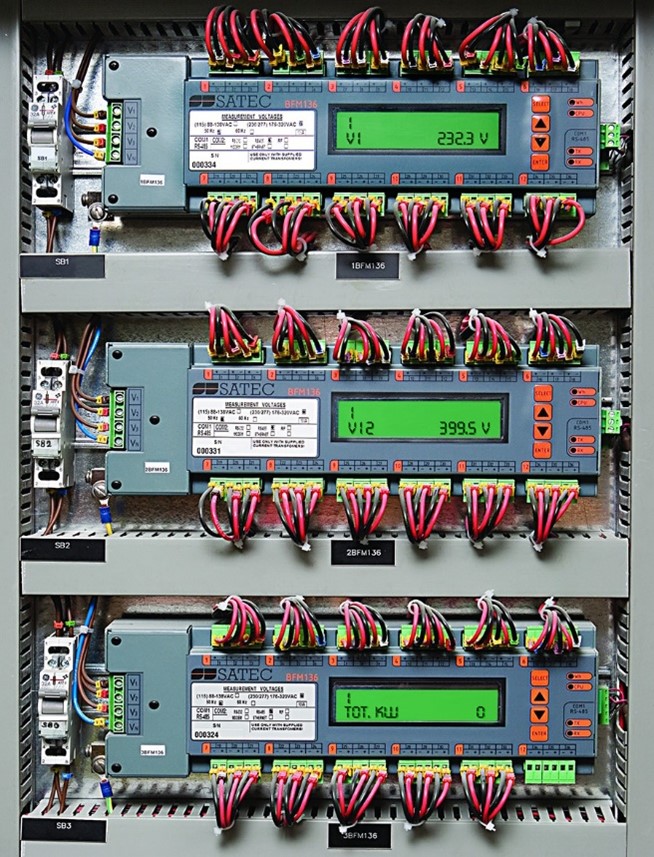There are many motor starters types in the world. This article will introduce different types of motor starters from difference aspects.

Motor Starter Types by Starting Methods & Techniques
Full Voltage or Across The Line Starter:
This is the simplest and most common type of motor starter. It directly connects the motor to the full line voltage, resulting in a high starting current.
Suitable for applications where the motor can withstand the high starting current, such as small to medium-sized motors.
Full Voltage Reversing Starter:

Similar to the full voltage starter, but with additional circuitry to reverse the direction of the motor.
Used in applications requiring reversible operation, such as conveyors, elevators, and machine tools.
Multispeed Starter: Allows for multiple operating speeds of the motor by changing the number of poles or the
frequency of the power supply.
Used in applications where variable speeds are required, such as fans, pumps, and machine tools.
Reduced Voltage Starter:

Reduces the voltage applied to the motor during starting, limiting the starting current.
Used for large motors or applications where reduced starting current is essential to prevent voltage dips or mechanical stress.
Motor Starter Types by current & voltage controlling method
1. Manual Motor Starters

Working Principle: Turn on or off the power supply by manually operating the switch or button to start and stop the motor.
Features: Simple structure, low cost, but poor flexibility, suitable for small motors or occasions with low requirements for the starting process.
Applications: Small machine tools, household appliances, etc.
2. Magnetic Motor Starters

Working Principle: Use electromagnetic coils to generate magnetic force, control the opening and closing of contacts, and realize the control of the motor.
Features: Reliable start, fast action, remote control and automatic operation can be realized.
Applications: Industrial production lines, pumps, fans, etc.
3. Reversing Motor Starters

Working Principle: Change the direction of motor rotation by changing the wiring method to realize the forward and reverse function.
Features: The structure is relatively complex, but the forward and reverse control of the motor can be realized.
Applications: Equipment that needs to change direction, such as cranes and conveyors.
4. Soft Motor Starters

Working Principle: Smooth starting is achieved by gradually increasing the voltage applied to the motor, thereby reducing the starting current and mechanical impact.
Features: Extend the life of the motor, reduce the impact on the power grid, and is suitable for high-power motors.
Applications: Fans, pumps, compressors, etc.
5. VFD Motor Starter

Working Principle: Use the inverter to change the power frequency to control the motor speed and torque.
Features: High control accuracy, can achieve stepless speed regulation, and significant energy saving effect.
Applications: Fans, pumps, conveyors and other occasions where speed regulation is required.
6. Direct Online (DOL) Starter
Working Principle: The motor is directly connected to the power supply, and the starting current is the largest.
Features: Simple structure, low cost, but greater impact on the power grid and motor.
Applications: Small motors and occasions with short starting time.
7. Rotor Resistance or Slip Ring Motor Starter
Working Principle: By adding resistance to the rotor circuit, the starting current is reduced.
Features: Suitable for high-power slip-ring asynchronous motors, but the structure is complex and the cost is high.
Application: Large fans, pumps, etc.
8. Stator Resistance Starter
Working Principle: Connect resistance in series in the stator circuit to reduce the starting voltage, thereby limiting the starting current.
Features: Simple structure, but low efficiency.
Application: Small motors, where a small starting current is required.
9. Autotransformer Starter
Working Principle: Use autotransformers to reduce the starting voltage, thereby reducing the starting current.
Features: Smooth starting and less impact on the power grid.
Application: Medium-sized motors, where a smooth starting is required.
AC or DC motor starters Types
DC motor starters
DC motor starters are mainly used to control the starting and running of DC motors. Due to the characteristics of DC motors, their starter design is relatively simple.
AC motor starters
AC motor starters are of various types and widely used. Common types of AC motor starters include:
Direct-on-line starters (DOL): Directly connect the motor to the power supply, with large starting current, suitable for small motors and occasions with short starting time.
Autotransformer starter: Use autotransformers to reduce starting voltage and starting current.
Star-delta starter: Suitable for three-phase induction motors, the starting current is reduced by changing the wiring method.
Inverter starter: Use inverters to control the motor speed to achieve precise speed regulation and energy saving.

Motor starter Types by Phase
Single-phase motor starters
Single-phase motor starters are mainly used to control single-phase AC motors. Since the structure of single-phase motors is relatively simple, their starter design is also relatively simple.
Three-phase motor starter
Three-phase motor starters are mainly used to control three-phase AC motors. Due to the wide application of three-phase motors, there are many types of three-phase motor starters. Common types include the above-mentioned DOL starter, autotransformer starter, star-delta starter, soft starter, inverter starter, etc.
Conclusion
The choice of motor starter depends on various factors, including the motor size, application requirements, and desired level of control. By understanding the different types of motor starters and their characteristics, you can select the most suitable option for your specific needs.






